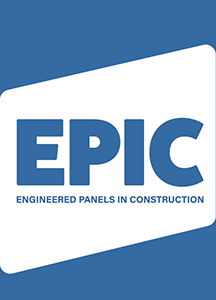After several months delay it came as no surprise that the announcement of the next changes to the Approved Documents to Part L for England was extremely cautious. In order to stimulate and maintain the slow recovery of the construction industry, the Government has recognised areas that would struggle to achieve greater carbon savings under current circumstances, but at the same time EPIC believes that it now has considerable ground to make up in order to achieve the dearly held targets of net zero carbon construction by 2019 for non-domestic buildings.
An aggregate improvement of 9% over 2010 standards will be required by ADL2A 2013, ranging from around 3% for industrial/warehousing to 13% for commercial/offices. This is expected to be achieved largely through better air tightness, lighting controls and services, leaving the building fabric virtually unchanged, although further improvements in U-values would help to substantially contribute to the target savings and provide a reliable, cost effective and durable platform on which to base long term savings.
EPIC has been part of the Government’s advisory group for industrial type buildings, and welcomes the fact that practical targets have been set on air tightness in line with the research figures from building studies that it has presented. However, it is clear that areas such as joints and junctions, which are prone to air leakage, will need to come under much closer scrutiny and be carefully managed at both design and contract level. Insulated panel systems are easily capable of air leakage rates of 5m3/h/m2 or better, and can help to meet the tighter standards, whatever the size of the building.
Although renewable energy sources will not become a requirement in order to attain the new standards this time round, they will surely become an essential part of any future strategy if we are to continue down the path to zero carbon in 2019, especially in light of the significant gap between that particular target and the standards that will, hopefully, be coming into force in April 2014. The building envelope will have an even more important role to play by optimising energy efficiency and reducing heating/cooling demand to a level where renewables become a feasible major source of energy.
For the first time Wales will be following separate standards, with a proposed aggregate 20% reduction in carbon emissions over 2010 Part L requirements for non-domestic buildings. The details and time scales for this change are yet to be confirmed.
http://wales.gov.uk/about/cabinet/cabinetstatements/2013/partlbuildingregs
Scotland will continue to operate under Technical Standard Section 6, with an ambitious target of a 43% reduction in emissions over current requirements from October 2015.
http://news.scotland.gov.uk/News/Drive-for-greener-buildings-483.aspx
These changes will mean that 3 different sets of calculations could be required, depending on where in the UK buildings are being constructed.

